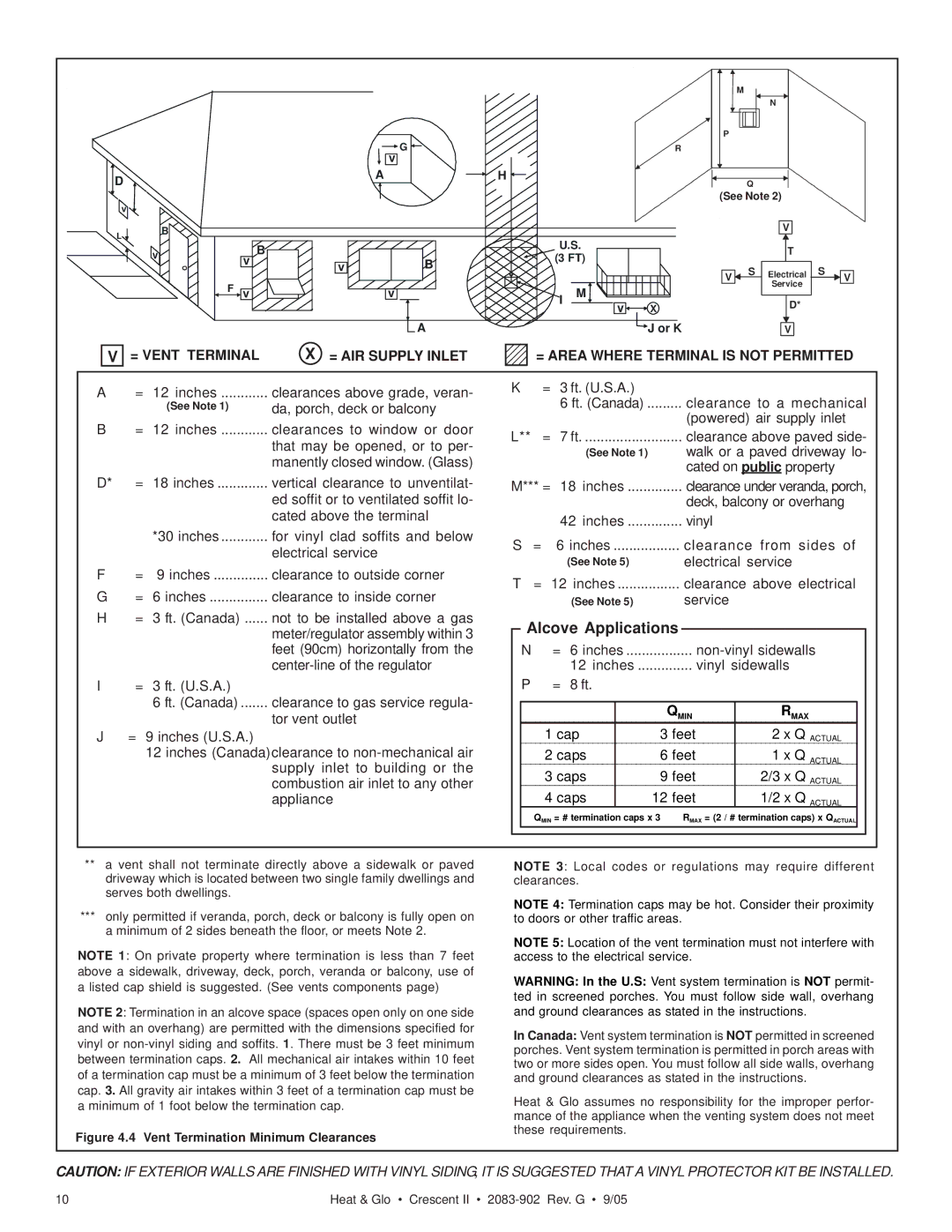Crescent II specifications
Hearth and Home Technologies' Crescent II stands as a leading example of cutting-edge fireplace innovation, delivering both aesthetic appeal and efficient warmth to any home. Designed with a focus on user experience, the Crescent II combines modern design with state-of-the-art technology, making it an ideal choice for homeowners seeking both functionality and style in their heating solutions.One of the standout features of the Crescent II is its sleek contemporary design. The large viewing area, framed by minimalistic lines, creates a striking focal point in any room, allowing homeowners to fully appreciate the mesmerizing dance of flames. Available in various sizes and finishes, the Crescent II can seamlessly integrate into diverse interior styles, from modern to traditional.
The Crescent II is equipped with advanced heating technologies, including a powerful airflow system that optimizes heat distribution throughout the space. This ensures that the warmth is evenly spread, eliminating cold spots that can diminish comfort levels. The unit operates with high efficiency, offering a thermal efficiency rating that meets and often exceeds industry standards, making it an environmentally friendly choice.
In addition to its heating capabilities, the Crescent II features a user-friendly interface, equipped with intuitive controls that make managing the fireplace a breeze. Homeowners can easily adjust the flame height and heat output, allowing for personalized comfort. Some models also come with optional smart technology, enabling remote control via smartphone apps for added convenience.
Another notable characteristic of the Crescent II is its commitment to safety. The unit includes safety features such as a secure glass front that remains cool to the touch, protecting users from burns. The fireplace is designed for venting options that reduce emissions and enhance indoor air quality, ensuring a safe and healthy home environment.
Maintenance is also simplified with the Crescent II. The design allows for easy access to components for cleaning and servicing, providing peace of mind that the fireplace will continue to perform optimally with minimal effort.
In summary, the Hearth and Home Technologies Crescent II is an exceptional fireplace that combines elegance, efficiency, and advanced technology. Its modern aesthetics, powerful heating capabilities, user-friendly controls, and commitment to safety make it a top choice for those looking to add a stylish and functional heating element to their home. With the Crescent II, homeowners can enjoy the warmth and ambiance of a fire while embracing convenience and modern living.

